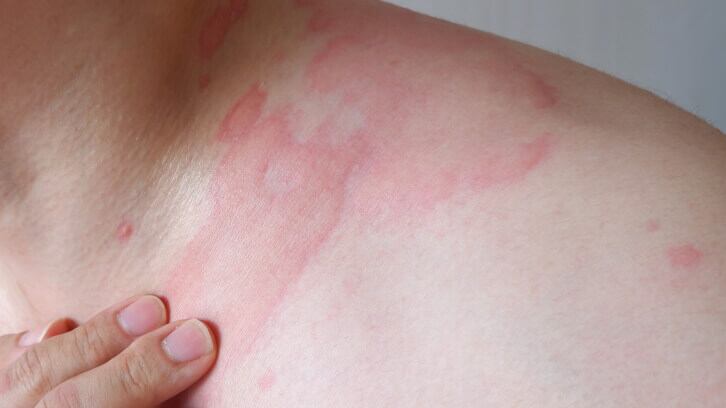The introduction of the Modernization of Cosmetics Regulation Act (MoCRA) has brought significant changes to the cosmetics industry, particularly in the area of adverse event reporting. With new requirements in place, cosmetics companies are facing unprecedented challenges in managing and reporting serious adverse events to the FDA.
In this CosmeticsDesign Q&A, Jaclyn Bellomo, Senior Director of Cosmetic Science & Regulatory Affairs at Registrar Corp, provides insights into the key challenges companies face, the inadequacies of existing processes, and how Registrar Corp’s Adverse Event Management (AEM) software is designed to streamline compliance and protect both brands and consumers. Bellomo offers expert advice on navigating these regulatory changes and the critical role of effective post-market surveillance in the evolving cosmetics landscape.
CDU: How prepared are cosmetics companies for the new MoCRA adverse events reporting requirements?
Jaclyn Bellomo (JB): We have heard a lot of companies claiming they are prepared but have seen serious adverse events increase dramatically in the last six months, having many companies come to the realization that they are, in fact, not prepared – there is a lack of knowledge about what to ask, collect, and how to submit to FDA.
Cosmetic companies should also view this as an opportunity to protect their brands and catch issues before it becomes a public health concern.
CDU: Can you provide an overview of the key challenges that cosmetics companies face with the new MoCRA adverse events reporting requirements?
JB: Reporting of serious adverse events becomes more complicated as a company does not have the proper information that is mandatory to report to the FDA or the information that they need to provide in order to properly investigate and form a proper assessment of the adverse event. Companies have 15 days to report to the FDA a serious adverse event, and without a proper intake process and system, it will be difficult to meet the time requirement.
To add even further complexity to the reporting requirements, FDA is using the MedWatch 3500A form, which is specific to drugs and medical devices, which can be confusing for companies to understand which fields and information need to be completed for FDA.
CDU: How do these challenges differ from previous requirements, and why are existing consumer complaints processes inadequate?
JB: Cosmetics companies have not had to comply with regulations around Receiving or Record keeping adverse events, and in most cases used customer service or consumer compliant department to manage incoming health-related events.
These types of departments are not trained to ask the right questions, such as “any known allergies” or “existing skin conditions” or “how did you use the product” – these require a trained staff member with a quality background to understand the steps and information needed to collect for a health-related event with the use of a cosmetic product.
Consumer complaints are training for a much different scope of issues that could potentially cause more harm with not handling correctly.
CDU: What advice would you give to cosmetics companies that are just beginning to navigate the new MoCRA requirements?
JB: Know what your company needs to comply with and what you can and cannot take on. One of the hugest issues we see is brands taking on regulations that they are not able to handle because of bandwidth or the complexity of the regulation. Understanding what can be handled in-house vs. hiring outside service alleviates a lot of stress, frustration, and risk of non-compliance.
CDU: Can you elaborate on the key features of the AEM software that address the specific needs of cosmetics companies for MoCRA compliance?
JB: Cosmetics have been granted the ability to use electronic contact as a means for receiving adverse events from consumers, which has not been allowed in other industries, such as drugs or dietary supplements. We have been able to create a branded URL or QR code that companies can use on their cosmetic primary and secondary labels that brings consumers to a dedicated web domain with over 40+ fields to collect all necessary information for investigating and reporting an adverse event.
We can collect information that domestic addresses or call centers and services cannot upon the first communication with the consumer. Additionally, the Adverse Event Management (AEM) software alerts team members the moment an adverse event is submitted, allowing teams to react instantly.
Within the AEM software, you can quickly view, share, and download reports and images of newly submitted reports and determine if the event was classified as serious or non-serious. This helps the team to effectively manage and understand timing requirements if needed to report to FDA.
CDU: What are some common pitfalls or challenges that companies should be aware of and avoid when using Registrar Corp's AEM software?
JB: It is important to know who on the team is handling the software and, more importantly, the process, teams, and scope of work it will involve when a non-serious or serious adverse event is reported. The AEM software prepares companies for the requirements, but more importantly, implementing the tool to be the most effective for a company is just as important.
CDU: How do you see the implementation of MoCRA and tools like the AEM software changing the landscape of the cosmetics industry?
JB: It is important to provide services and software to answer these new and changing requirements, and Registrar moves fast in adapting ways to answer the pain points that companies are facing to keep up with the ever-changing regulatory landscape. We hear daily about how brands believe they are compliant and find that they have missed or misunderstood a regulation. We at Registrar Corp are here to help navigate all these changes and challenges for companies.
CDU: How do you anticipate FDA enforcement of MoCRA will impact cosmetics companies in the near future?
JB: FDA has already started to enforce MoCRA requirements, and we will see more as the year goes on. Most importantly is understanding FDA’s authority and that they are able to recall a product or suspend a facility if they believe that there is potential for a serious adverse event or a public health concern. This is why collecting information and providing the assessment is crucial in understanding a company’s next steps and potential liability for the products that are receiving adverse event reports.
CDU: Can you discuss the role of retailers in pressing brands to become MoCRA compliant and how the AEM software addresses these pressures?
JB: We have heard many retailers that have requested Adverse Event Contact Information as a part of their mandatory information requirements. Retailers want to make sure that there are proper ways for consumers to report adverse events. Retailers want the brands to be responsible for their products and follow FDA regulations. Our AEM software can provide retailers with the URL and show Retailers a proper intake system to act quickly and promptly for items sold in stores if there is an issue.
CDU: Are there any future enhancements or features planned for the AEM software that you can share with us?
JB: We see this as a great post-market surveillance tool, so we are planning on having product AE reports to view how many reports have been reported for a certain product. Also, to normalize incidence rate and predictable events with the use of a product as well as determining acceptable ranges and actionable variations of the product. The Post Market surveillance reports can enhance consumer safety and brands' ability to provide improvements if needed or support the safety of their products used in a large population.





